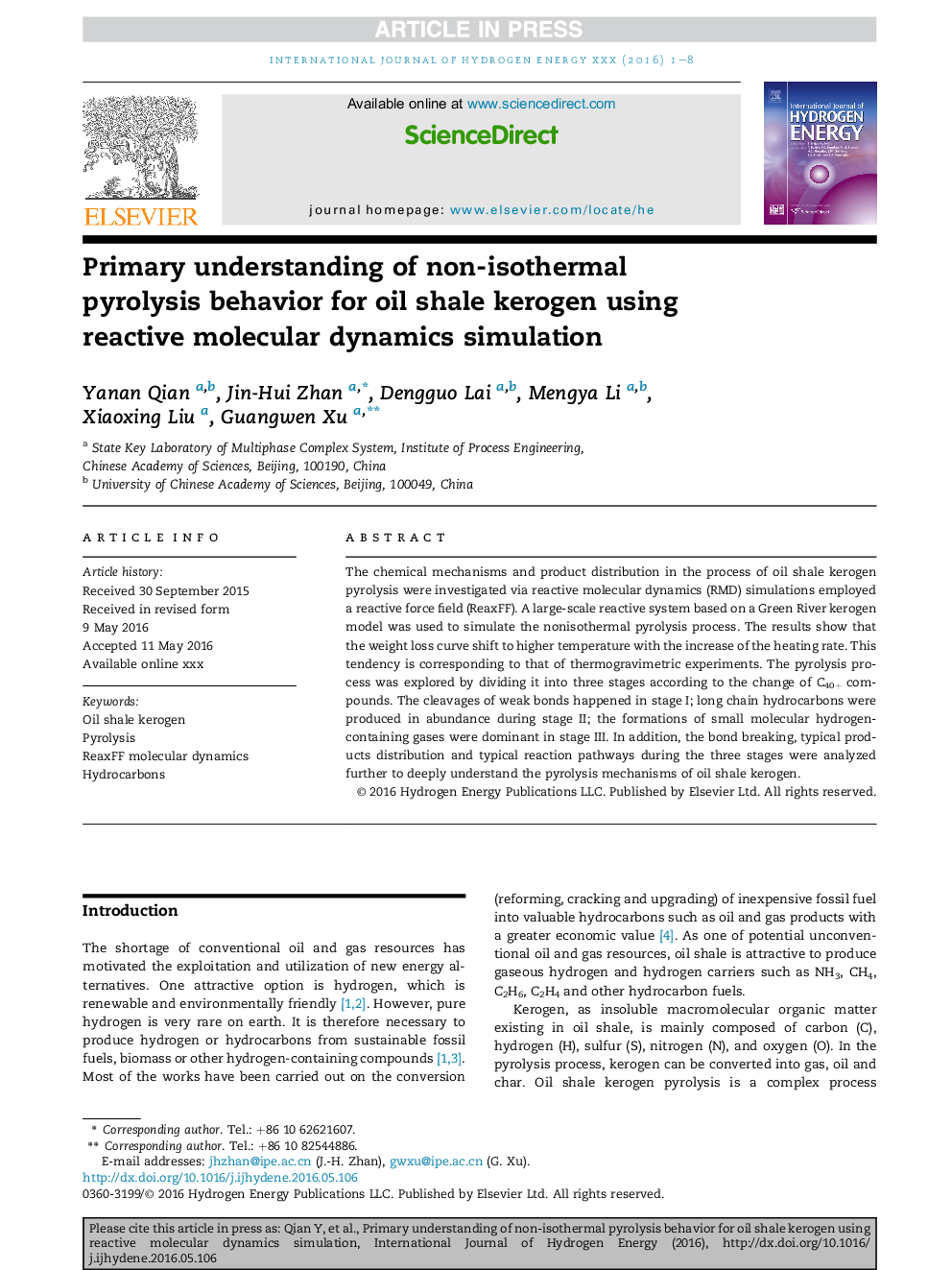| Article ID | Journal | Published Year | Pages | File Type |
|---|---|---|---|---|
| 7710166 | International Journal of Hydrogen Energy | 2016 | 8 Pages |
Abstract
The chemical mechanisms and product distribution in the process of oil shale kerogen pyrolysis were investigated via reactive molecular dynamics (RMD) simulations employed a reactive force field (ReaxFF). A large-scale reactive system based on a Green River kerogen model was used to simulate the nonisothermal pyrolysis process. The results show that the weight loss curve shift to higher temperature with the increase of the heating rate. This tendency is corresponding to that of thermogravimetric experiments. The pyrolysis process was explored by dividing it into three stages according to the change of C40+ compounds. The cleavages of weak bonds happened in stage I; long chain hydrocarbons were produced in abundance during stage II; the formations of small molecular hydrogen-containing gases were dominant in stage III. In addition, the bond breaking, typical products distribution and typical reaction pathways during the three stages were analyzed further to deeply understand the pyrolysis mechanisms of oil shale kerogen.
Related Topics
Physical Sciences and Engineering
Chemistry
Electrochemistry
Authors
Yanan Qian, Jin-Hui Zhan, Dengguo Lai, Mengya Li, Xiaoxing Liu, Guangwen Xu,
